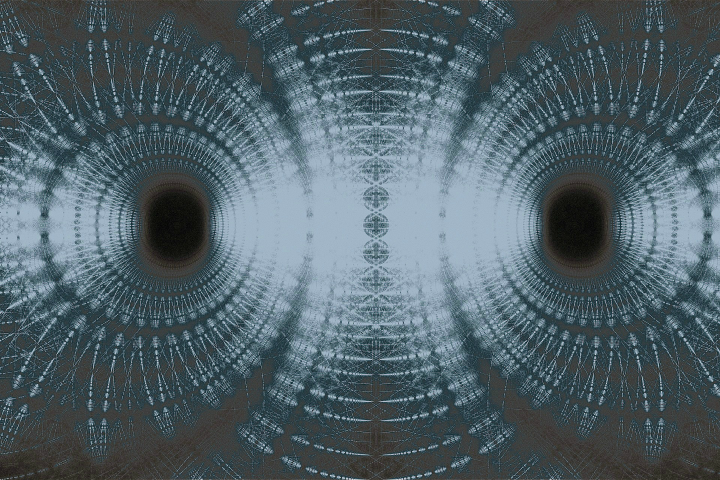
Astrophysicists investigating gravitational-wave data from the far reaches of the Universe believe they may have found an explanation for a curious signal detected from the collision of two black holes.
The signal, named GW190412, was picked up by the LIGO/Virgo detectors, which are set up to observe gravitational waves – the ripples in space and time caused by huge astronomical objects – and use them to make new discoveries about our Universe.
GW190412 is unusual for a number of reasons. Firstly, scientists calculated that one of the two black holes which produced it had an unusually large mass. In addition, unlike other black holes detected previously, the more massive black hole is definitely spinning, and spinning in an unusual way.
A team of scientists from the University of Birmingham, MIT, and Johns Hopkins University set out to find out more about the black holes that produced GW190412. Their results, published in Physical Review Letters, suggest the unusual characteristics could be explained by one of the black holes being formed as a result of a previous “parent” black hole collision.
Lead author Dr Davide Gerosa, of the University of Birmingham’s Institute for Gravitational Wave Astronomy, says: “Black holes are usually thought to be born when massive stars run out of nuclear ‘fuel’, and gravity takes over, making their iron core collapse. But what if they could also be formed by the collision of two parent black holes? This would explain the key features of GW190412.”
The team also modeled the type of environment in which this sort of collision might take place. They suggest it must have occurred in an environment with a large number of black holes, namely a star clusters. The most studied clusters to form black holes are the so-called “globulars” --group of stars in the outskirts of most galaxies. However, GW190412 is exceptional: the team found that globular clusters are not suitable for this event: their density is too low to retain black holes after their merger.
Dr Salvatore Vitale, Assistant Professor of Physics at MIT and co-author on the paper, says: “Second-generation black holes can merge only in particularly dense astrophysical environments. This is because if only a few black holes were around, the parent black holes would simply not get a chance to meet.”
Dr Gerosa adds: “All these findings come together to suggest that GW190412 is not just unusual, it must also come from an unusual place in our Universe.”
- For media enquiries please contact Beck Lockwood, Press Office, University of Birmingham, tel: +44 (0)781 3343348.
- The University of Birmingham is ranked amongst the world’s top 100 institutions. Its work brings people from across the world to Birmingham, including researchers, teachers and more than 6,500 international students from over 150 countries.
- Gerosa et al (2020). ‘Astrophysical implications of GW190412 as a remnant of a previous black-hole merger’. Physical Review Letters.